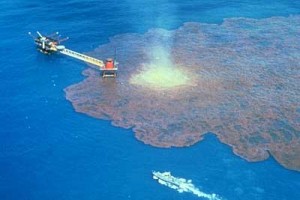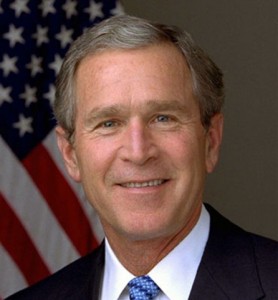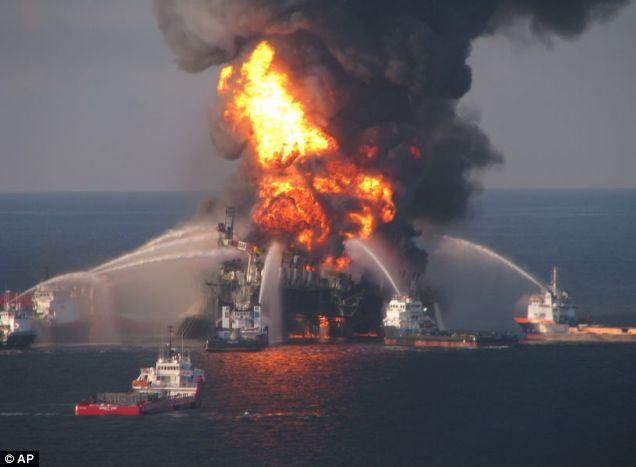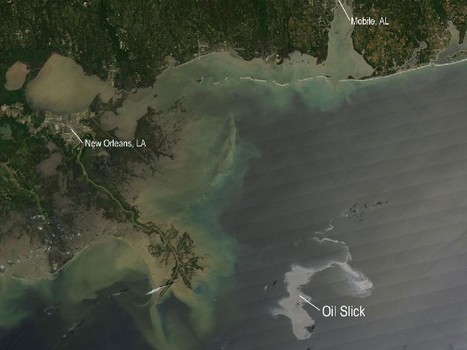
The Surface of the Oil Slick
Third in a series (1, 2, 3) that began on “Earth Day” (0).
BP and the government say they can’t measure the spill on the ocean floor. However, 5,000 barrels per day is reaching the surface and most of the oil – 80% to 90% – is below the surface. So I thnk it’s is on the order of 25,000 to 50,000 barrels per day.
But that’s my back-of-the-envelope estimate. NPR, on Friday, May 14, 2010 reported that Steven Wereley, who teaches mechanical engineering at Purdue University, Tim Crone, a research scientist at Lamont-Doherty, and Eugene Chiang, an astrophysicist at UC Berkeley, believe they can make a pretty reasonable estimate of the amount of oil gushing into the Gulf. Wereley based his estimate on particle image velocimetry analysis of the video BP released. He says says 70,000 barrels per day, give or take 14,000 barrels, is gushing from the Deepwater Horizon spill. Crone agrees with Wereley but said he’d like better video from BP before drawing a firm conclusion. Chiang estimates the flow at 20,000 to 100,000 barrels per day. 880,000 to 2,200,000 gallons of petroleum products into the Gulf of Mexico Each
DAY! That’s 6,160,000 to 15,400,000 gallons per week.
After 20 days that’s 400,000 to 2.0 million barrels. Each barrel could have been refined into 44 gallons of gasoline, jet fuel, and other petrochemicals. But even at 5,000 barrels per day – 100,000 barrels in the first 20 days – this is a catastrophic event.

President Reagan
One hundred years from now, when historians, in energy efficient homes and offices powered by wind, solar, and geothermal, write about the end of the era of fossil fuel, they will point to the April 5, 2010 disaster at the Upper Big Branch, W. Virginia coal mine and the April 20, 2010 catastrophe at the Deepwater Horizon oil rig in the middle of the Gulf of Mexico.
Historians may assign responsibility to the energy policies of President George W. Bush and Vice President Cheney. They will note that President Carter put solar water heating system on the roof of the White House (click here for pdf) and President Reagan took them down in 1986. Their assessment of President Obama will be predicated on his next actions. Does he continue to embrace “Drill Baby Oops,” Coal with Carbon Sequestration, and Nuclear Power? Or do a 180 degree turn to sustainability?

Pres. George W. Bush
I don’t know what the pressures are at a depth of 5000 feet below the surface of the ocean. But there’s methane ice down there. At atmospheric pressure, Liquid Methane freezes is at -182.5 °C and methane gas liquifies at -181 °C (here)
The most important questions are:
What will be the effect of all that oil on fishing, tourism, the weather and the climate? It could be good for the maple syrup, solar power, and wind power industries, and the locavore food movement.

President Obama
Given the severity of the spill, and what it demonstrates about our ability to operate at 5,000 feet below the surface of the ocean, I think we should rethink the Purgen Coal with Carbon Sequestration Plant, which will pump carbon dioxide into a well a mile below the ocean.
In addition, NPR reported on May 12, (here) that a House investigative subcommittee said Wednesday that the blowout preventer, had multiple defects — everything from leaky hydraulics to a dead battery.
How did it happen? BP and Transocean say the rig was built to handle working pressures of 20,000 PSI, but the safety equipment was built for pressures of 60,000 PSI. Clearly, the upward pressure released by drilling 18,000 feet below the ocean floor, itself at a depth of 5,000 feet below sea level, exceeded the 60,000 PSI – that’s 60,000 pounds per square inch. In terms of reference, atmospheric pressure at sea level is 14 PSI. For more information and an exploration of this, Click Here to “Moore Think, Less Confusion.
Full text of both articles by NPR are reproduced below the fold Continue reading →





